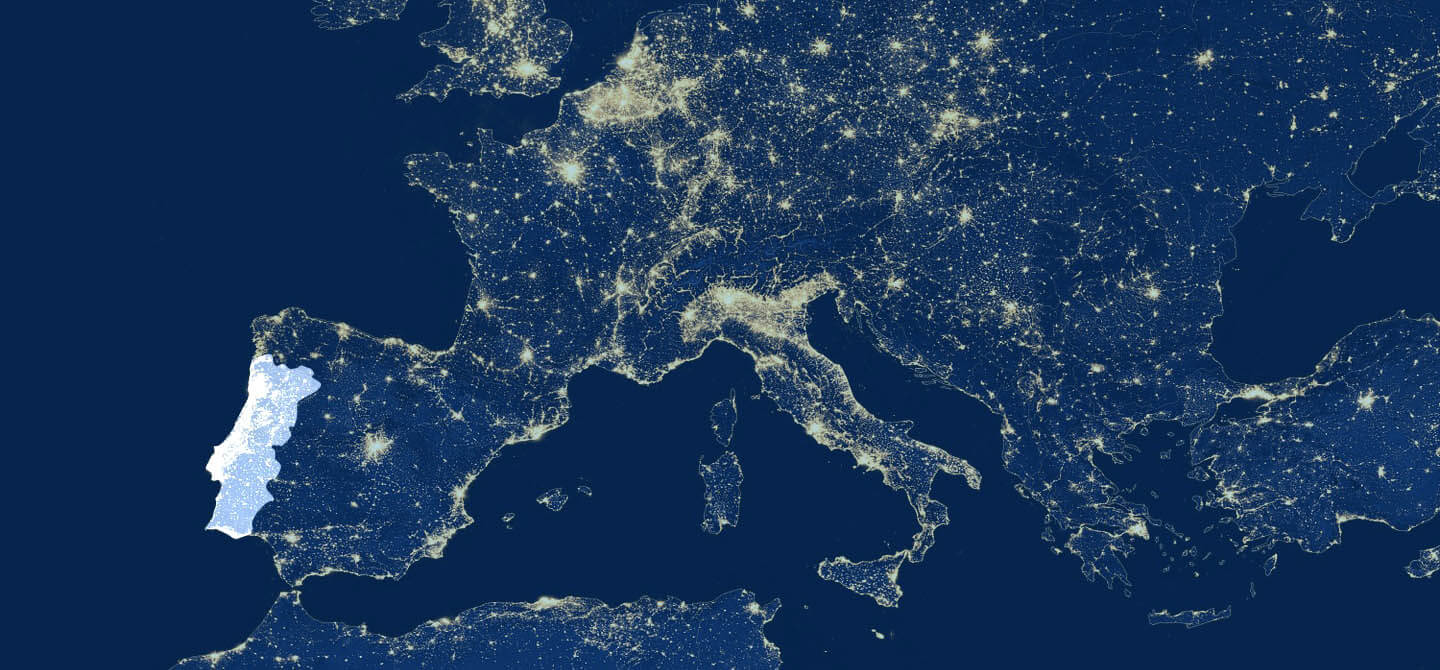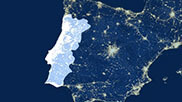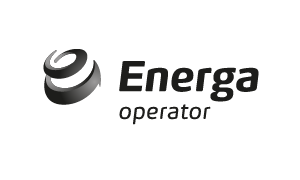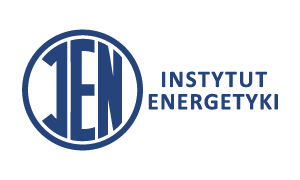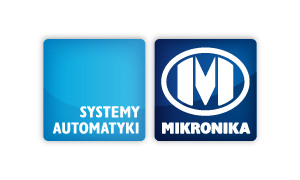Scope
An increased number of micro‐generation systems (in case of Polish network – PV installation) can potentially result in the following problems: increase of voltage levels above the admissible values and overloads of network elements (lines and transformers).
Improving distribution grid resilient by: new innovative monitoring and control, integrated tools/systems to support grid operation and planning, new market mechanisms and services incentivizing flexibility will assure the energy supply and build a flexible market.
Main Axis of Polish Demonstration are:
-
Universal Market Enabling Interface (UMEI)
A market enabling interface (UMEI), which seamlessly links active system management and market solutions through a universal, adaptable and modular approach -
Active Management System (AMS)
tools for distribution grid planning and operations support which guarantee security of supply and the use of flexibility products while integrating large shares of variable renewables; -
Flexible Substation (FS) deployment
secondary MV/LV substation for autonomous management of the connected LV network which provide and consume flexibility grid features. Algorithms for the specified FS functionality will be developed which can provide and manage such flexibility services as: control and monitoring of PV, enhanced observability of the LVnetwork; -
Dynamic Line Rating (DLR) System
used in ENERGA as the part of SCADA/EMS, as the source of the flexibility services, that can be offered to the TSO for 110 kV lines congestion mitigation purposes. The DEMO‐sites are assigned in complementary targets, not only in the scope of the tools and services to be tested, such as smart grid functionalities, congestion management and resiliency, amongst others, but also by providing an effective mean to demonstrate the UMEI concept.
Active Management System for LV network
New innovative FlexSubStation for improved monitoring and control LV network
HV line overload mitigation actions
Congestion management at MV & LV
Improve Voltage Control
Improve the observability of MV networks
The Polish demonstration will be conducted in Northern part of Poland including, in particular, the following areas:
- Local Balancing Area near Hel peninsula with well‐developed MV grid automation and high number of smart meters, DERs and energy storage;
- selected part of LV network with large shares of variable renewables supplied from selected secondary substation;
- 110kV network as the source of flexibility services.
Energy storage (Li – Ion Batteries)
Medium and Low voltage control
Dynamic Line Rating (DLR)
Active and reactive power control
Technologies
The Polish demonstration part of the project (PL DEMO) will be carried out in the following areas:
- In the Local Balancing Area near the Hel Peninsula with well-developed MV grid automation and a large number of smart meters. The new flexibility services will be demonstrated and their ability to use the Universal Market Enabling Interface (UMEI) will be demonstrated. This area includes ~ 90 MV / LV stations (rural, industrial, households) with a peak load of ~ 6 MW, 4 wind farms with a total installed capacity of 6 MW, a biogas plant with a total installed capacity of 0.8 MW, and energy storage with a capacity of 0, 75 MW and 1.5 MWh capacity.
- On the territory of three Branches: in Płock (Mława), Kalisz (Ostrów Wielkopolski) and Gdańsk (Wejherowo), where 3 areas of the LV grid have been selected with a large share of variable renewable sources, supplied from a selected MV/LV station. In selected locations, three stations will be modernized and adapted to the requirements of the Flex Station.
- Dynamic Line Rating System (DLR) used in ENERGA as part of SCADA / EMS to assess the actual and short-term forecast line capacity. DLR is to be used as a source of the flexibility of services that can be offered to TSOs to reduce traffic congestion.
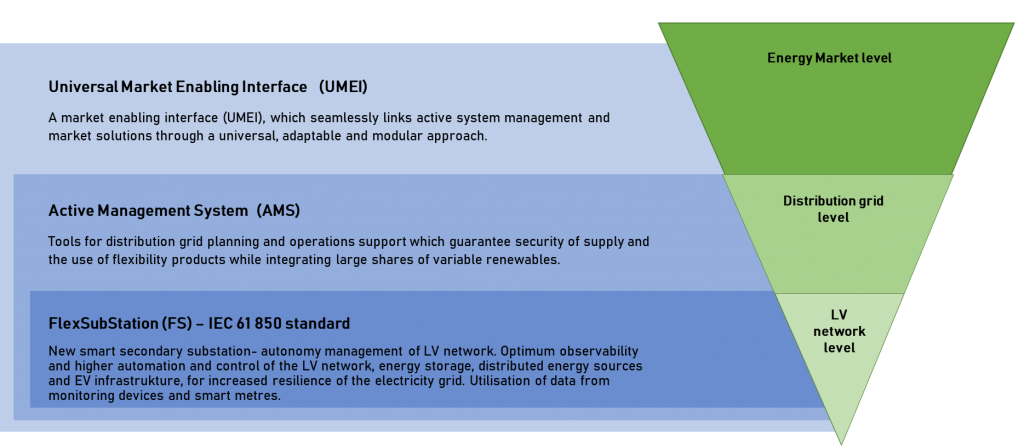
As part of the EUniversal project, an innovative MV/LV station was designed for autonomous management of the low voltage network and enabling the provision of network flexibility services – FlexSubStation. The FlexSubStation was designed based on IEC 61 850 standards. Its functionality will be tested in three Distribution Regions selected for the pilot – Mława, Ostrów Wlk. and Wejherowo
New intelligent MV / LV substation will ensure advanced monitoring and control of low voltage grids, autonomous control and monitoring of photovoltaic (PV) generation, energy storage and electric vehicle charging infrastructure, faster failure detection, as well as maintaining the grid voltage within acceptable limits, especially with high PV saturation. Such a solution leads to the creation of tools enabling the future provision of flexibility services.
The flexible substation will have a transformer is equipped with an OLTC transformer, MV and LV switchgear, PLC data concentrator, MV line feeder bay controllers, and a central controller. Its functionality includes the measurement of phase voltages and currents with the recording after short-circuiting detection, detection of short-circuit current flow, control of the transformer circuit breaker and line switches, and most importantly – it allows you to remotely control the position of the tap changer (OLTC).
The heart of the station is the central controller, which is responsible for the control of the LV grid voltage and communication with the SCADA system, detection of damage to fuse-links, and monitoring of the PV installation. Information about voltages downstream of the network is collected from smart meters installed at customers’ sites through the AMI concentrator. In addition, current and voltage parameters are monitored in all low voltage output feeders from the substation.
The first such station will be installed in one of the Mława housing estates by mid-June. For the next six months, we will monitor its operation with various automatic control algorithms. The results of the research will allow us to assess the usefulness of the wide application of such substations in voltage regulation in ENERGA networks.
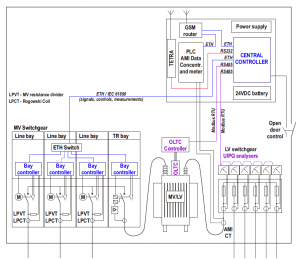
Meet the Other Demo Projects

Germany
